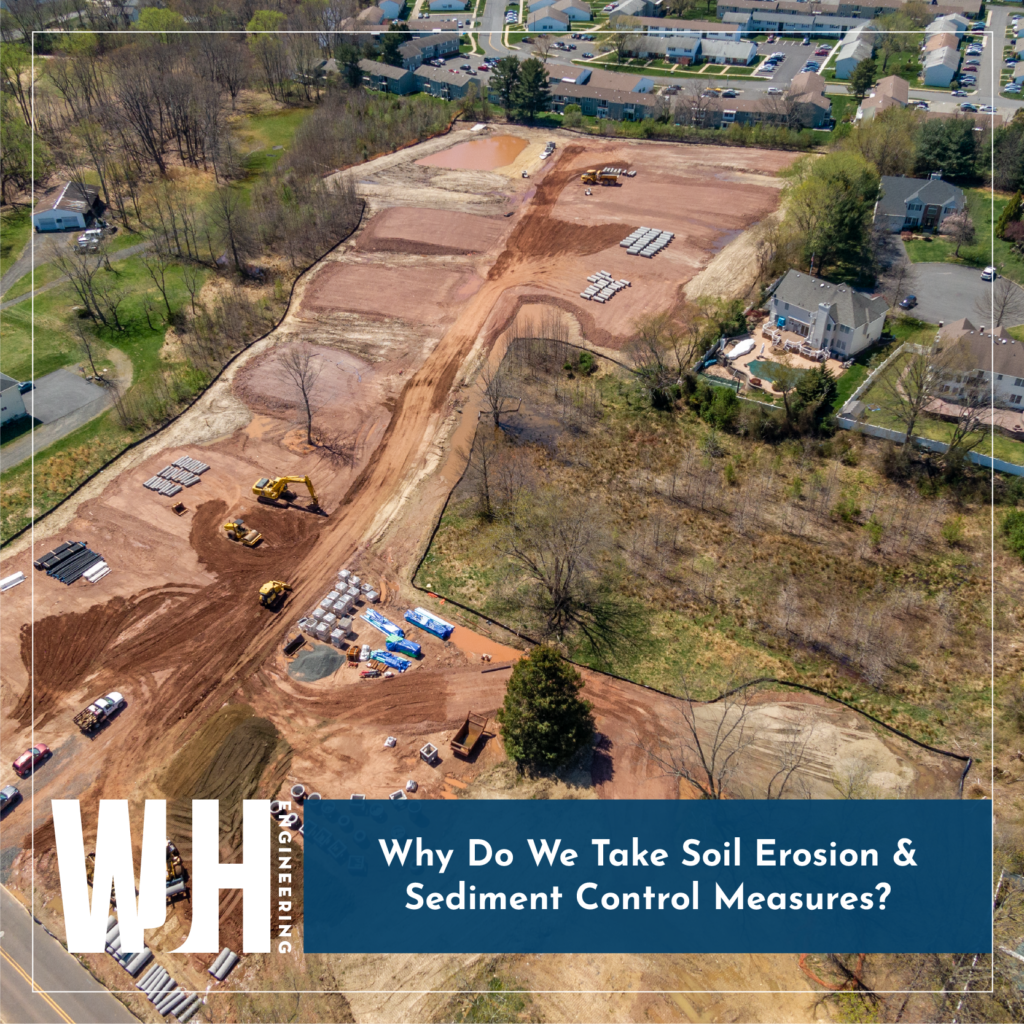Have you ever driven past a construction site and wondered: What is the purpose of that black fabric installed along the site’s border? This black filter fabric is known as a silt fence, and it plays a vital role in preserving a site’s soil. Normally, vegetation stabilizes topsoil so that stormwater is less likely to disturb it and transport it downstream. When this vegetation is removed for construction, the exposed soil and can be eroded more easily. This deposit of sediment can be harmful to nearby bodies of water, wetlands, and other sensitive areas. To make matters worse, eroded soil can lose its nutrients and become futile for future planting.
To mitigate these harmful effects of soil erosion, the State of New Jersey requires all projects disturbing more than 5,000 square feet of terrain to receive certification from their county’s Soil Conservation District (SCD) before construction. Soil Conservation Districts are locally led government agencies that implement preventative measures in cooperation with the NJ Department of Agriculture and other state organizations to protect natural soil. To receive certification from the SCD, one has to prepare a Soil Erosion and Sediment Control (SESC) plan and application. SESC plans outline the area on a site that will be disturbed during the construction process, and include important construction details such as stabilized vehicle access, tree protection, soil stockpile locations, and drainage inlet protection. SESC plans also provide a general sequence of construction to be followed, soil seeding and stabilization notes, silt fence details, and instructions for soil compaction testing. If you have a project that requires approval from your county’s Soil Conservation District, contact WJH Engineering today!


